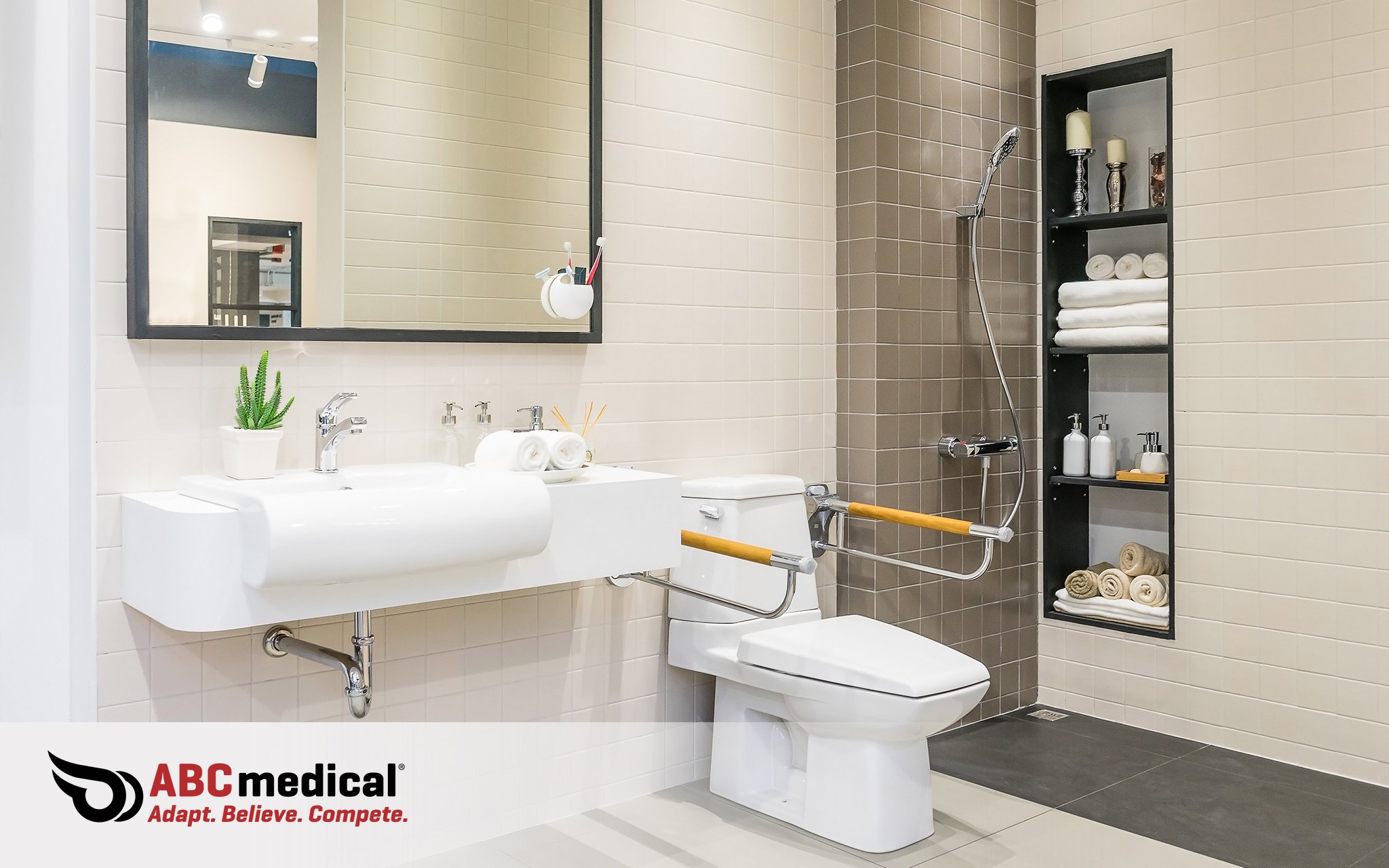
Home bathrooms are not always designed to accommodate the needs of older adults and individuals with disabilities. Inadequate bathroom design can make it harder to care for yourself and remain independent. It may also contribute to your risk of falling and hurting yourself. In today’s article, one of your top medical supply companies will discuss bathroom modifications that improve independence and safety for people with mobility issues as well as insurance and waiver programs that may have funds available for home modifications for older adults or people with disabilities.
General Bathroom Safety
Use of grab bars in strategic locations and placing non-slip mats over areas that get wet are two easy interventions to reduce the risk of falls. Keeping the path to the bathroom well-lit and free of obstacles is also recommended. If you or a loved one have experienced bathroom falls or other difficulties with independently bathing and toileting, physical and/or occupational therapy may help. These therapists can work with you to regain strength and stability or learn new techniques for self-care. Your primary care doctor can order in-home therapy for this purpose.
Low Threshold Walk-In Showers
Low threshold showers do not have a tub. Instead, there is a low threshold entry that allows users to step easily into the shower without having to navigate a bathtub. This can reduce the risk of falls during shower entry. Some walk-in showers are available with a bench and grab bars already installed. Most shower manufacturers have walk-in models available. You can view examples of walk-in showers here: https://www.homedepot.com/c/ai/walk-in-shower-ideas/9ba683603be9fa5395fab9010df3900d
Wheelchair Accessible Roll-In Showers
Wheelchair users need special showers designed to accommodate roll-in entry. Some people use rolling shower chairs for this purpose. The shower is designed without a threshold. This will allow you to enter the shower and operate it from your wheelchair. When shopping for roll-in showers, make sure the shower is ADA compliant – meaning it has met performance standards required by disabled users. You can view examples of wheelchair accessible roll-in showers here: https://www.freedomshowers.com/ADA-Showers-for-Handicapped-Accessibility/Wheelchair-Accessible-ADA-Roll-in-Showers
Walk-In Bathtubs
Many of us enjoy soaking in a tub from time to time. If you have problems with mobility, a walk-in tub can be a good way to upgrade your bathroom for a safer bathing experience. Walk-in tubs have a door along the edge of the bathtub that opens as well as a low threshold entry. This allows the user to easily enter the tub without having to lift the leg and pivot. After entering the tub, the user simply closes the door and fills the tub with water. Many walk-in tubs also contain seats, adding to comfort and accessibility. Some walk-in bathtubs contain additional features, such as temperate controls to prevent accidental scalding and whirlpool or bubble jets. You can view examples of walk-in bathtubs here: https://meditub.com/
Bath Lifts and Toilet Lifts
A toilet lift is a mechanical seat that lowers you down onto toilet and back up when you are done. You can view an example of a toilet lift here: https://www.liftseat.com/
A bath lift is a mechanical seat that lowers you into the tub and back out once you’ve finished your bath. There are many styles of bath lifts available. You can view examples of bath lifts here: https://www.rehabmart.com/category/bath_tub_lift.htm
Raised Toilet Seats
Standard toilets can be too low for people with mobility problems. A raised toilet seat elevates the sitting surface, so it is easier to get on and off the toilet without help. Some raised toilet seats come with grab bars to provide additional support. You can view examples of raised toilet seats here: https://www.homedepot.com/b/Bath-Bathroom-Safety-Toilet-Seat-Risers/Elevated-Toilet-Seat/N-5yc1vZ1z18i9qZ1z1smcq
Shower Chairs and Grab Bars
Shower chairs can be placed in your existing shower and allow users to sit while showering. These chairs are available at many pharmacies. Grab bars can be installed alongside toilets or in showers to provide support and stability, reducing the risk of falls. There are many types of grab bars available – some require professional mounting, and some can be attached to the shower walls with strong suction cups. Here are examples of bathroom grab bars: https://www.homedepot.com/b/Bath-Bathroom-Safety-Grab-Bars/N-5yc1vZcfvb
Getting Help with Bathroom Modifications
A plumber can provide expert advice on what bathroom modifications are possible and customize your bathroom to suit your needs. Toilets, sinks, tubs or showers can be re-arranged or replaced to improve accessibility. Many companies offer free consultations. Contacting your health insurance plan about bathroom modifications for impaired mobility is also a good idea. Some plans or waiver programs may have funds available for home modifications for older adults or people with disabilities. It may also be helpful to contact your local Independent Living Center and Area Agency on Aging. These agencies provide valuable assistance to people with mobility issues, including information about programs that help cover renovation costs. Here are some useful links where you can learn more about local support for bathroom modifications:
State Directory of Home Modification Resources: search for a local home modification service provider near you
Local Area Agency on Aging: each region has a non-profit Area Agency on Aging that may provide home modification services
State Assistive Technology Program assistance with certain mobility devices
State Department on Aging: can provide information on modification programs offered by the state
Independent Living Center: local non-profit agencies for persons with disabilities that may offer loans and grants for home modification.
Rebuilding Together: national network of local affiliates that conducts home modifications and repairs for income-eligible individuals
Disclaimer: This content is not intended to be a substitute for professional medical advice, diagnosis, or treatment. For medical advice, please speak with your healthcare provider.



